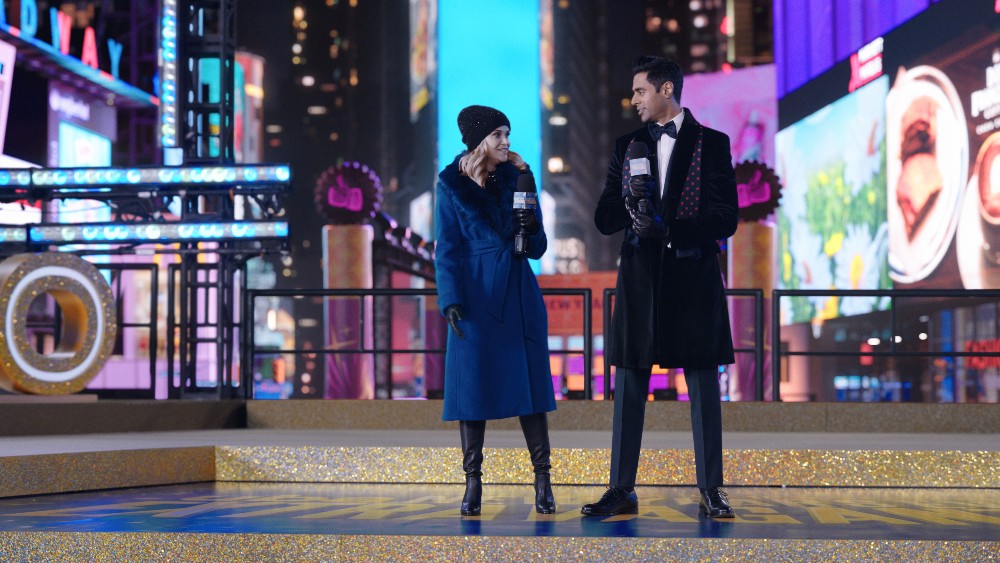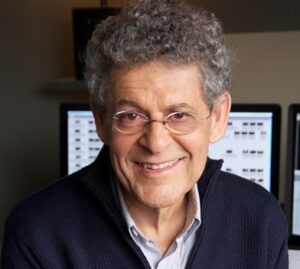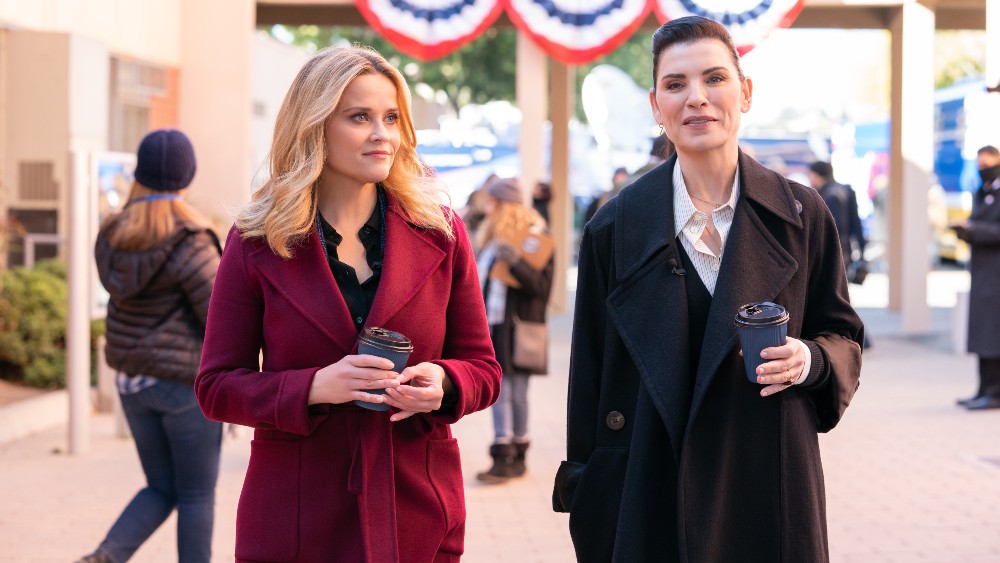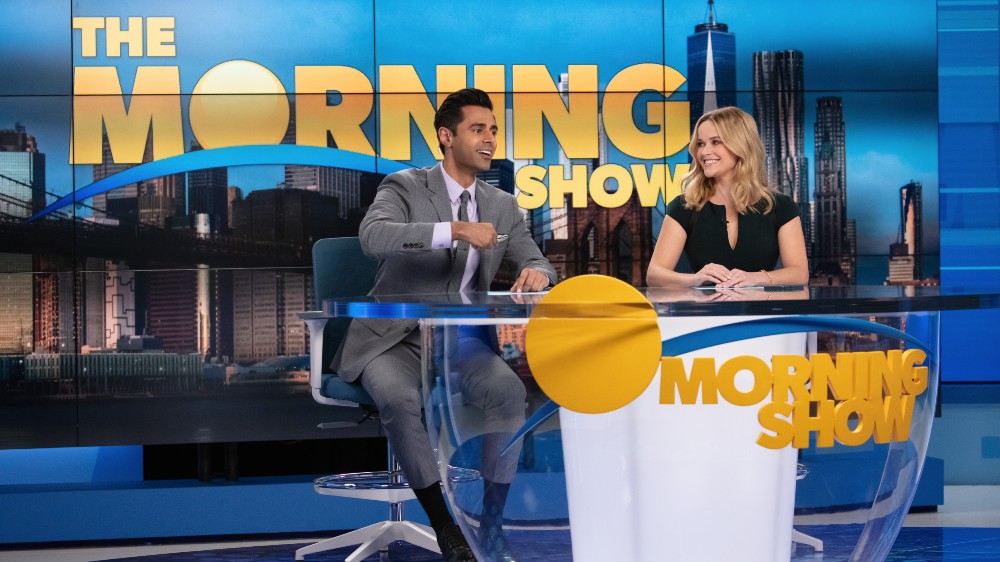
The scene takes place in Times Square where Apple TV+’s The Morning Show anchors, portrayed by Reese Witherspoon and Hasan Minhaj, are poised to ring in the new year on live television. Cut to
Sidney Wolinsky, ACE, meeting the challenge to splice together all the right moves, so that the scene seamlessly comes across to the viewer in an engaging way, albeit sometimes shorter than what was originally filmed on the day. On the second season of the must-see series, Wolinsky worked with Director Mimi Leder on four of her six episodes; taking a note here and there, but for the most part, Wolinsky is left on his own to do his legendary editing magic.
Sidney Wolinsky began his illustrious editing career in 1983 on My Tutor and continued over 38 years to edit various television series and features. Then along came The Sopranos, which put him on the map, earning him three Emmy nominations and two ACE Eddie Awards. His further collaboration with producer Terence Winter on Boardwalk Empire resulted in an Emmy Award for “Outstanding Single-Camera Picture Editing for a Drama Series” for the pilot episode. On the big screen, Wolinsky was nominated for the Academy Award for “Best Film Editing,” and the BAFTA Award for editing Guillermo del Toro’s The Shape of Water.
All accolades aside, Wolinsky takes his work very seriously, and it’s a job that he has fun doing. With a masters in film at San Francisco State College, he originally thought he might become a DP, but realized he was better suited to adjust the scene rather than create it to tell the story.

Below The Line spoke with Sidney Wolinsky from his home editing suite, which is proudly decorated with a priceless The Sopranos poster from the first season, signed by creator David Chase. Sidney fondly reflects on his time editing the series’ 33 episodes from 1999-2007 and even lays out how he cut the much-talked-about controversial ending. He also discusses editing The Morning Show and how he solves the scene one cut at a time.
Below The Line: When you began with The Morning Show, what was your main goal?
Sidney Wolinsky: I read the script and watched the first season, because I hadn’t been on it, and then just start cutting. I don’t know that editors have those conversations with directors to be quite honest about what they want. There are a lot of other people worrying about what it looks like. There’s the production designer, the DP; when they shoot it, they want it to be put together, so it works. That’s my job. Once stuff is shot and I’m looking at it with Mimi [Leder], certainly, she gives me notes, and if I had issues I would share them with her. I just wait for my dailies to come into my cutting room and cut.
BTL: Can you give me an example of a note Mimi might have given you?
Wolinsky: Mimi was very open, and sometimes, I’d say such and such doesn’t really make sense. She’d think about it and say I’m right, so take it out or give it a shot and show it to me. I felt very comfortable with her sharing my thoughts about material, and it was actually a great experience working with her.
BTL: What were your first impressions when you read the script?
Wolinsky: I thought there were some great scenes. I love scenes where people are in conflict, which are fun to cut, and with such great actors, even more fun to cut. I saw challenges in terms of the material, in terms of the Times Square [scene]. I knew those scenes would have a lot of stuff and be a challenge to put together.

BTL: What were the challenges of editing the Times Square scene?
Wolinsky: It was all green screen and recreated. They had a stage in a parking lot in Santa Ana or something like that. So you have to visualize what things were going to be like around that and hope that your choices make sense after all the CGI has been put in. It’s a little difficult to figure out what sizes you want to be in.
BTL: What other scenes were challenging to edit?
Wolinsky: In a way, every scene is a challenge because actors aren’t perfect and they blow their lines. You have to find the readings that work, and even great scenes like this big argument in the second episode between Jennifer Aniston and Reese Witherspoon’s character, that was a fabulous scene, but you have to find the pieces that actually work and put it together and make sure it matches.
BTL: Do you sort of rewrite the script with pictures and sound when you edit?
Wolinsky: The first pass, I cut it the way it’s written and shot. Eventually, they want to take out a scene or restructure the show. They want to drop scenes or split them in half, and that’s sort of when you get into the nitty-gritty of shaping the material beyond what was actually in the script.
BTL: Do you ever feel precious about an edit and fight to keep it?
Wolinsky: I would never fight for my edit. I think that’s Editing 101. I might explain why I cut something a certain way. I’m not always right. I welcome other points of view. If I have a specific reason for doing something in my first cut, I might explain it and Mimi might say, “I understand, but I want to see it this other way,” and “I would do it the other way.” Sometimes, it surprises me there are ideas that I don’t have that other people have and that I execute them and they really work.
BTL: Do you ever regret things that are left on the cutting room floor?
Wolinsky: There are a few things, but I won’t tell you about them. [laughs]. I mean, sure there are things that you would like to keep, but that’s true on every show. On The Sopranos with David Chase, my first cut might be 74 minutes long and the show might end up being 55 minutes long. He hacked away at things, and sometimes he’d lose a really funny line and I’d really miss it. It is the nature of editing. We are sort of rewriting the script in that way.
BTL: Over your illustrious career, what editing work are you the most proud of?
Wolinsky: When a cut works, and it really stands out, that’s what I’m proud of, and I had that with The Morning Show. Other shows? Well the last scene in The Sopranos, that was challenging. We had that Journey song “Don’t Stop Believin’” — the concept of what it was gonna be and the fade to black and trying to coordinate all that, I had all the material that David shot with Meadow outside parking and a lot of moving parts. The show was overlong. I didn’t know what the shots were going to be. Tony goes into the diner and AJ comes in, the various members sit down and have whatever, onion rings. I didn’t know what he’d shoot but I had the song as the backbone of the whole cut which was good. I remember my assistant said, “You know people are gonna think their cable went out when it goes to black.” I hardly expected the response it got, but that was one I’m proud of. I remember people saying [Chase] brought back people from all the seasons, the guy with the Members Only jacket was from whatever. They were just random day players that he had come in and do stuff.
BTL: What attracted you to editing, and did you start with film stock?
Wolinsky: I thought I could’ve been a DP, but that was too technical, and the thing that attracted me to film was telling stories. I maybe could’ve been a scriptwriter or a director, but I was attracted to editing and putting the images together. Seeing what happened when you put two images together and suddenly there’s an idea. Unfortunately, I’m old enough to have cut on film. I was an assistant editor and editor on film, and then I transitioned into digital. I’d never want to cut on film again, but I went through this period, “No f**king way! I’m always gonna cut on film.” At this point, I can’t imagine not working digitally, because you can just do so much more. People used to say, “Oh I like the film going through my hand, so I could measure it.” I would never want to go back to film.
BTL: Do you think at some point you’d like to direct and edit your own projects?
Wolinsky: I think directing is not in the cards for me. It’s a long road to get to be a director, and I’m not sure there’s enough runway ahead of me to make that work. [laughs]I don’t know that I’m temperamentally suited for that. I’ve never worked with an actor. I mean, I’ve cut their performances. There are skills that directors have that I could develop if I really wanted to because I know what the end product is going to look like, but it’s very specific and a very demanding job.
BTL: How has the business changed over 38 years since you began?
Wolinsky: More and more, I realized that audiences are really smart and they see everything in the frame and there’s nothing incidental. You have to be sure that everything you are showing is intentional. If things are not clear, people make up their own stories. You have to be aware of that when you’re cutting, that everything you show has meaning. To put a scene together and see five hours of dailies boiled down to three minutes of film that really is moving, is what’s rewarding. I’m able to understand material and take material and make it work. I’m totally open to changes. I believe my cut is the beginning of the process, not the end.
You can stream the first two seasons of The Morning Show on Apple TV+. All photos courtesy Apple.






